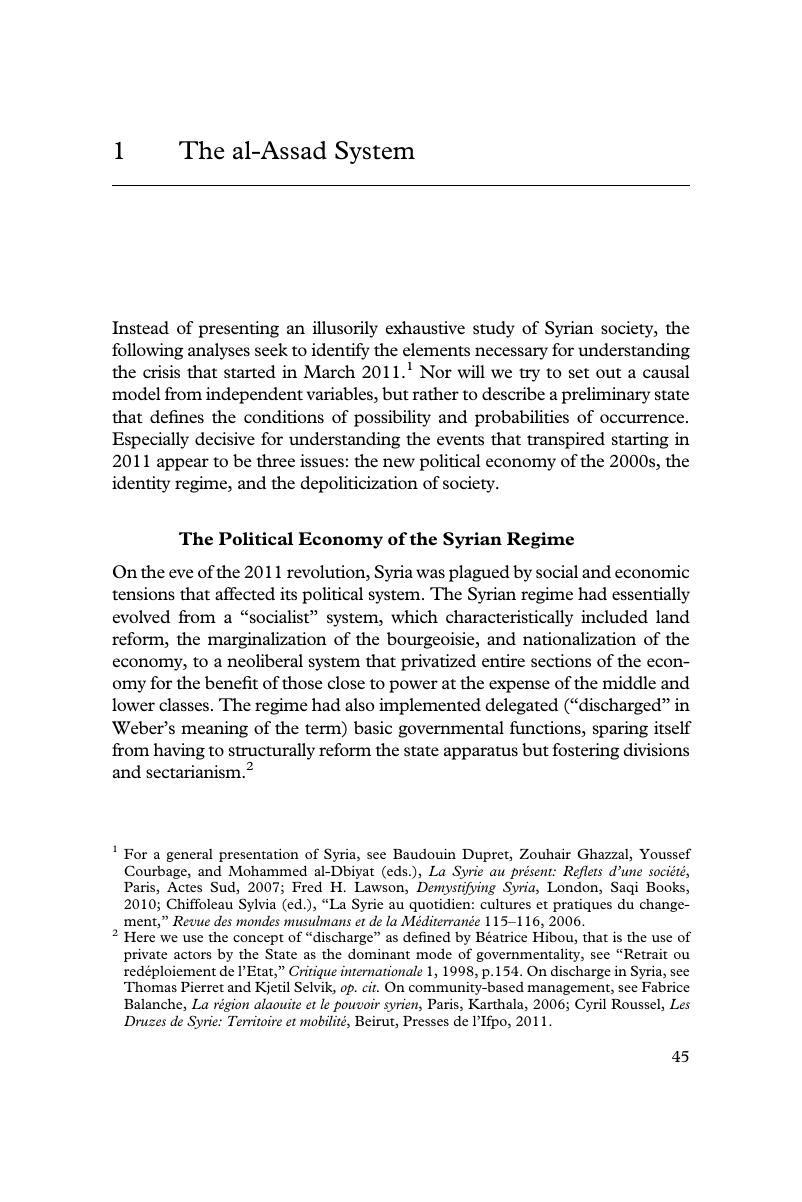Book contents
- Civil War in Syria
- Problems of International Politics
- Civil War in Syria
- Copyright page
- Epigraph
- Contents
- Tables
- Maps
- Acronyms
- Acknowledgments
- A Note on Transcription
- Prolegomena
- Introduction
- Part I Genesis of a Revolution
- 1 The al-Assad System
- 2 A Revolution of Anonyms
- 3 The Path to Civil War
- Part II Revolutionary Institutions
- Part III The Fragmentation of the Insurrection
- Part IV A Society at War
- Conclusions
- Annex
- Bibliography
- Index
1 - The al-Assad System
from Part I - Genesis of a Revolution
Published online by Cambridge University Press: 22 November 2017
- Civil War in Syria
- Problems of International Politics
- Civil War in Syria
- Copyright page
- Epigraph
- Contents
- Tables
- Maps
- Acronyms
- Acknowledgments
- A Note on Transcription
- Prolegomena
- Introduction
- Part I Genesis of a Revolution
- 1 The al-Assad System
- 2 A Revolution of Anonyms
- 3 The Path to Civil War
- Part II Revolutionary Institutions
- Part III The Fragmentation of the Insurrection
- Part IV A Society at War
- Conclusions
- Annex
- Bibliography
- Index
Summary

- Type
- Chapter
- Information
- Civil War in SyriaMobilization and Competing Social Orders, pp. 45 - 64Publisher: Cambridge University PressPrint publication year: 2018

